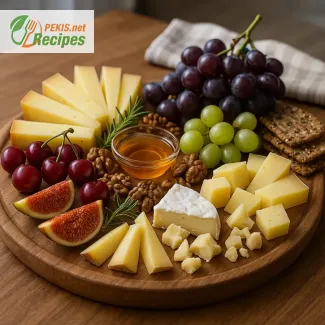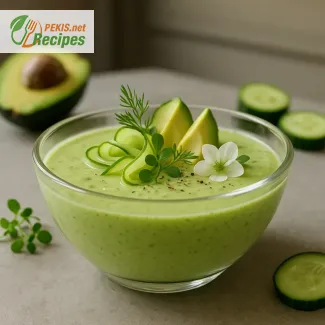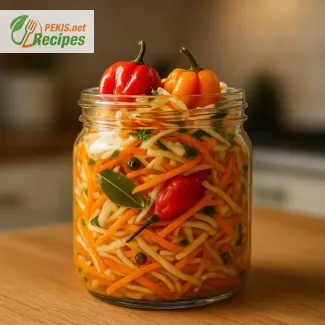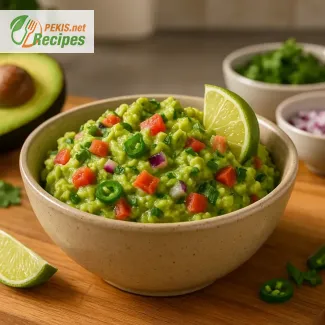
Discover the Art of Swiss Cheese Presentation in a Summer-Inspired Way
A celebration of Alpine flavors with fresh seasonal fruit and traditional apéro charm
In the heart of the Swiss Alps, where pristine pastures give life to some of the world’s most distinctive mountain cheeses, the tradition of crafting a well-balanced cheese platter has been elevated into a true culinary ritual. The Alpine cheese platter with fresh fruit is more than just a starter or picnic centerpiece—it’s a sensorial journey through texture, aroma, and seasonal balance, perfect for balmy summer afternoons or elegant outdoor gatherings.
This Swiss-style apéro board highlights the unmatched quality of artisanal Alpine cheeses, each with its own story, character, and geographical pride. From creamy Tomme Vaudoise and nutty Gruyère to the sharper aged Appenzeller or Sbrinz, this selection reflects the diversity and richness of traditional cheese-making methods that date back centuries. These cheeses are chosen not only for their flavor but for how they complement fresh summer fruits like figs, cherries, grapes, and pears. Their sweetness and juiciness bring refreshing contrast to the bold, often salty or umami-rich cheeses.
While the word "platter" may evoke images of party trays or buffet lines, the Alpine cheese board is in a league of its own. It’s curated with precision, aiming to balance every element: soft and hard textures, mild and sharp flavors, creamy and crumbly consistencies. To elevate the experience, fresh fruit is not just a colorful garnish—it plays a central role in bringing vibrancy and moisture, acting as a palate cleanser and enhancing the tasting rhythm.
Equally important is the visual layout of this cheese platter. A thoughtfully arranged board celebrates natural shapes and colors: wedges of semi-hard cheeses, rustic clusters of grapes, thin slices of ripe nectarines, fresh herbs like thyme or rosemary, and a scattering of roasted nuts. This artistic composition reflects the essence of Swiss apéro tradition, where sharing, visual appeal, and taste harmony go hand in hand.
One of the beauties of this concept is its simplicity and adaptability. There’s no need for heavy cooking or extensive prep. What matters is quality over quantity—choosing 3 to 5 well-aged cheeses and pairing them with in-season fruits and rustic accompaniments such as seeded crackers, artisan bread, and perhaps a drizzle of local honey or a spoonful of fig jam. This approach brings refined elegance to casual dining, suitable for everything from a lakeside picnic to an intimate evening on the terrace.
The Alpine cheese platter also lends itself perfectly to entertaining in warm weather, when appetites lean toward lighter fare. The marriage of dairy richness with fruit freshness is not only satisfying but revitalizing. The platter can be served as an appetizer, a light main course for vegetarians, or a centerpiece for a no-fuss alfresco brunch. Wine pairings are equally versatile—think of a crisp white like Chasselas or Riesling, or even a delicate rosé to match the fruity notes.
Creating an Alpine cheese board is about more than flavor; it's about expressing seasonality, terroir, and hospitality. With just a handful of thoughtfully selected ingredients, you can craft an experience that delights the senses and tells a story. It brings a taste of the Alps into your home or picnic basket and showcases how simple ingredients—when carefully paired—can become a culinary showpiece.
By embracing the Swiss apéro culture, this platter not only enhances your summer menu but also introduces a mindful and social way of eating, where regional cheeses and ripe fruit connect people around the table in an authentic, tasteful experience.
1. Slice the cheese:
Cut the Gruyère, Appenzeller, and Tomme Vaudoise into slices or wedges, and shave or break the Sbrinz into rustic chunks. Let them sit at room temperature for 15 minutes before serving to enhance their flavors.
2. Prepare the fruit:
Wash the figs, grapes, cherries, and pear thoroughly. Cut the figs in half, slice the pear thinly, and leave the grapes and cherries whole for easy grabbing.
3. Arrange the platter:
On a large wooden board or platter, start by placing the cheeses at different corners. Distribute the fruit around the cheeses, keeping contrasting colors and shapes together for a visually appealing presentation.
4. Add garnishes and extras:
Sprinkle roasted walnuts across the board. Drizzle honey in a small serving bowl and place it in the center or next to the Tomme Vaudoise. Tuck fresh rosemary sprigs in between the cheeses for a fragrant touch.
5. Serve with sides:
Place the seeded crackers or rustic bread slices in a basket or on a side plate. Serve immediately while the cheese is soft and the fruit fresh.
Creative Twists to Elevate Your Alpine Cheese Platter
Flavorful upgrades, ingredient swaps, and healthy adjustments to enhance a summer Swiss apéro board
Crafting a cheese platter that feels indulgent, authentic, and balanced can seem straightforward at first glance, but there’s an art to fine-tuning each element for maximum impact. The classic Alpine cheese platter with fresh fruit already delivers a satisfying blend of textures, aromas, and tastes, yet with a few smart enhancements, this timeless dish can become even more refined, health-conscious, and visually captivating. Whether you're preparing it for guests, enjoying it solo on a summer afternoon, or pairing it with wine for a rustic outdoor dinner, small adjustments can produce impressive results.
How ingredient choices shape the final taste
The type of cheese you use significantly influences the flavor profile of your platter. While the original recipe includes Gruyère, Appenzeller, Tomme Vaudoise, and Sbrinz, you can enrich or vary the board with other regional cheeses. For example:
- Adding Bleu de Termignon or a mild Alpine blue cheese introduces tang and depth, ideal for adventurous palates.
- Swapping in L’Etivaz, a robust, slightly smoky cheese, adds complexity and rustic intensity.
- Incorporating a soft goat cheese balances out firmer Alpine cheeses with a creamy, tangy contrast.
Each swap doesn’t merely change the texture—it also alters how the cheese interacts with fruit. Sweet cherries, for instance, complement sharp cheeses like Sbrinz, while pears blend better with milder, creamier varieties.
Homemade versus store-bought platters
Creating your own cheese board gives you full control over freshness and quality. Unlike pre-assembled platters, which often rely on overly processed cheeses and bland garnishes, a homemade version can showcase:
- Locally sourced cheeses, fresher and more aromatic
- Seasonal fruits, picked at their peak ripeness
- Fresh herbs, like rosemary or thyme, adding visual elegance and subtle fragrance
- Custom presentation, tailored to the occasion or guest preferences
In addition, building your board from scratch encourages creativity. You can test pairings, shape visual aesthetics, and include complementary elements like dried fruit, spiced nuts, or small bowls of infused honey.
Common mistakes and how to avoid them
Even the most visually appealing cheese board can fall short if a few basic principles are overlooked. Some of the most frequent errors include:
- Serving cheese too cold: Always allow cheese to rest at room temperature for at least 15–20 minutes to allow aromas and textures to fully develop.
- Overcrowding the board: Negative space is crucial. Let each ingredient breathe to maintain visual clarity and avoid flavor mixing.
- Neglecting texture variety: Combining cheeses of similar hardness or meltiness leads to monotony. Aim for contrast—pair a firm Sbrinz with a soft-ripened Tomme.
- Using underripe or overripe fruit: Choose fruit that is ripe but still firm for optimal sweetness and structural integrity on the board.
Avoiding these pitfalls ensures a more pleasurable tasting experience and enhances presentation.
Boosting nutrition without losing taste
While cheese is naturally rich and satisfying, you can add nutritional depth to your platter without compromising flavor or elegance:
- Replace standard seeded crackers with whole-grain crispbreads or gluten-free oatcakes for a fiber-rich, digestive-friendly option.
- Include fresh berries, such as blueberries or raspberries, which are packed with antioxidants and offer tart-sweet contrast.
- Swap walnuts with a mix of almonds and pumpkin seeds for a different nutrient spectrum and crunch.
- Use raw honey or date syrup instead of heavily processed jams, offering a cleaner sweetness and natural mineral content.
These alternatives make your platter not only delicious but also better aligned with contemporary eating preferences, especially for those watching cholesterol or refined sugar intake.
Pairings and seasonal adaptations
The success of a cheese board often extends beyond the ingredients and into its seasonal context. In summer, opt for juicy stone fruits like peaches, nectarines, and apricots. In autumn, lean into dried figs, apples, and hazelnuts. Winter boards can include preserved fruit, cranberry compotes, and spiced nuts.
In addition, consider beverage pairings. A dry Riesling, crisp Chasselas, or light Pinot Noir pairs beautifully with a summer cheese platter, enhancing both the cheese and fruit flavors.
Artistic arrangement and sensory flow
The layout of your platter plays an essential role in how it's perceived and enjoyed. Follow a clockwise flow of taste, starting with the mildest cheeses and ending with the strongest. Cluster complementary flavors together—pear near goat cheese, cherries near Gruyère. Use small bowls for liquids like honey to avoid sogginess and maintain a clean look.
Creating height by stacking cheese wedges or fruit clusters adds dimension, while scattering rosemary sprigs provides a rustic, mountain-inspired touch. The goal is to invite exploration, where each bite offers contrast and harmony.
The Alpine cheese platter with fresh fruit is endlessly customizable, but each adjustment should be made with intent and balance in mind. Every addition, from an extra fruit to a new cheese variety, changes the sensory narrative of the dish. As you refine your own version, prioritize quality ingredients, aesthetic simplicity, and flavor balance. These are the cornerstones that elevate a traditional Swiss apéro board into a memorable culinary centerpiece.
Allergens present in the recipe:
- Milk and dairy products (cheese)
- Tree nuts (walnuts)
- Gluten (if crackers or bread contain wheat)
Tips to replace allergenic or gluten-containing ingredients:
- Dairy-free alternative: Use plant-based cheese made from cashews or almonds, ensuring they are aged or fermented for flavor.
- Nut-free alternative: Replace walnuts with roasted sunflower seeds or pumpkin seeds.
- Gluten-free option: Use certified gluten-free seed crackers or gluten-free sourdough bread.
Vitamins and minerals per serving (approximate):
- Calcium: 320 mg – Supports bone health and nerve function.
- Vitamin C: 12 mg – Strengthens the immune system and helps iron absorption.
- Vitamin A: 280 µg – Essential for vision, skin, and cell growth.
- Iron: 1.4 mg – Crucial for red blood cell production.
- Magnesium: 38 mg – Important for muscle function and energy production.
- Potassium: 290 mg – Regulates fluid balance and nerve signals.
- Phosphorus: 250 mg – Contributes to bone strength and metabolic processes.
- Zinc: 1.2 mg – Supports immune function and wound healing.
Antioxidants per serving (approximate):
- Polyphenols (from grapes, figs, cherries): 250 mg – Protects cells from oxidative stress and supports heart health.
- Vitamin E (from walnuts): 1.8 mg – Contributes to skin health and immune support.
- Beta-carotene (from pears and herbs): 400 µg – Converted to vitamin A, supports eye health.





